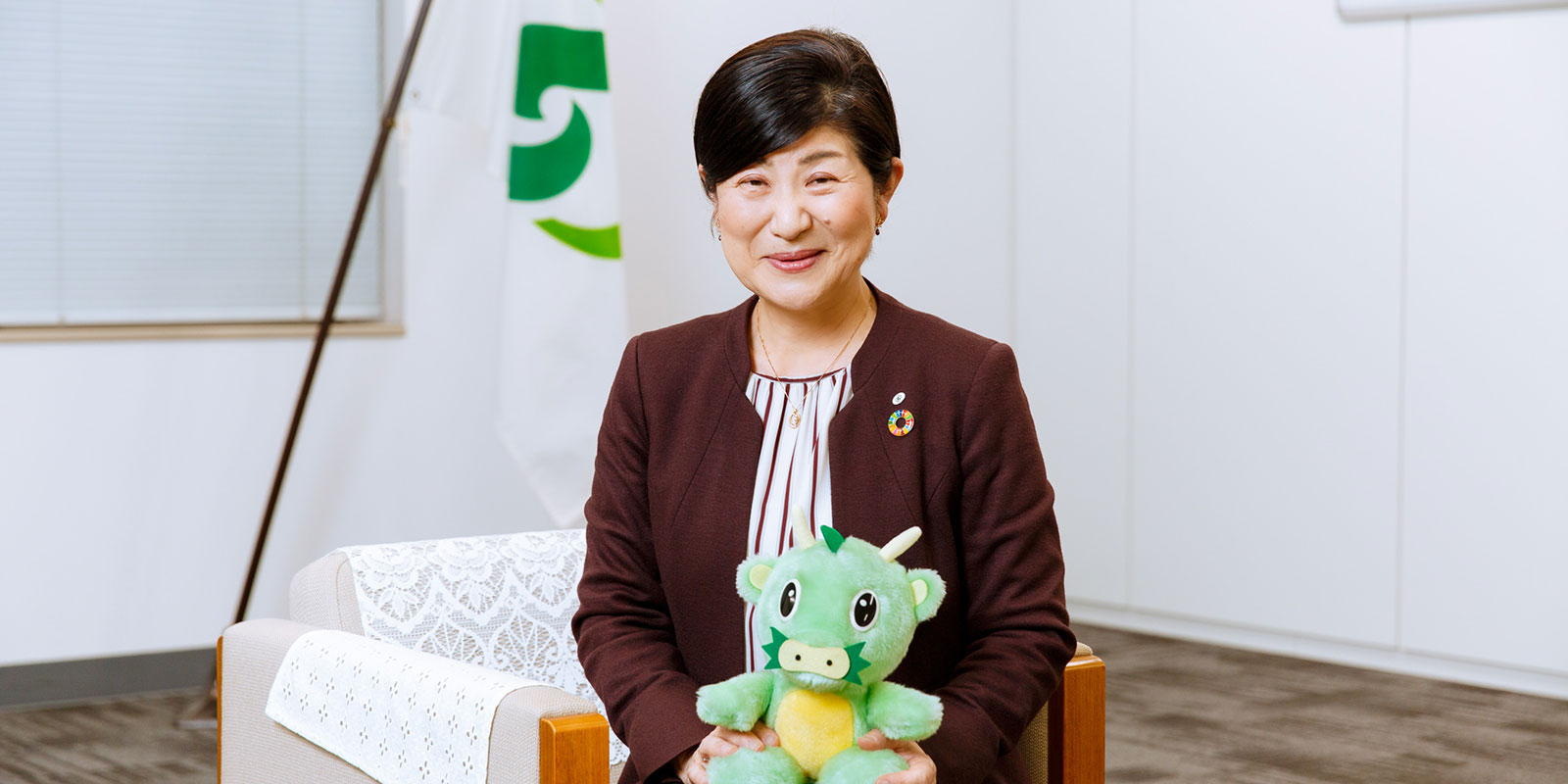Learning curve
Saitama City is collaborating with IT professionals to take digital education in its schools to the next level. Ili Saarinen digs into the aims of the city’s ambitious Smart School Project
Japanese schools have long been fond of traditional teaching methods, but are now eagerly embracing digital education. The groundwork for this revolution was laid by the GIGA (Global and Innovation Gateway for All) School project, unveiled by the Ministry of Education in 2019, which seeks to put digital devices into the hands of every one of the country’s 12 million elementary and junior high students. As the GIGA push dramatically transforms Japan’s educational infrastructure, some school districts are already taking the next step: leveraging digital technology to overhaul the education system to better prepare the next generation for their future.
“We aim to change three ‘hows’: how our students learn, how our teachers teach, and how we work in schools”
Among these frontrunners is Saitama, a city just north of Tokyo with a population of 1.3 million and home to 168 elementary, junior high and high, and special-needs schools, with total enrollment exceeding 100,000 students. Rooted in the realization that the traditional way schools work is in urgent need of change, the city’s groundbreaking Saitama Smart School Project (SSSP) seeks to harness the power of digital resources, learning, and data for the benefit of schoolchildren and teachers alike. “Our ultimate goal is education that fulfills the potential of each student,” says Mayumi Hosoda, superintendent of the Saitama City Board of Education. “To achieve that vision, we aim to change three ‘hows’: how our students learn, how our teachers teach, and how we work in schools.”
 Mayumi Hosoda, superintendent of the Saitama City Board of Education | Keisuke Tanigawa
Mayumi Hosoda, superintendent of the Saitama City Board of Education | Keisuke Tanigawa
Using technology to reform both how a city’s children study and the way its teachers go about their work sounds like a tall order, but Saitama has not been afraid to seek assistance where needed to ensure the success of the SSSP. The city is working together with a handful of private-sector firms, including educational infrastructure experts Uchida Yoko Co. Ltd, on matters such as the effective use of educational data and designing new forms of learning. “Education in Japan has traditionally sought to avoid influences from outside the school,” says Hosoda, “and working together with a leading private company is something quite new in our field.” But the limits of the self-sufficient approach are beginning to show. “In today’s world, if we are to meet our goals, I think we have to enlist the talents of external professionals where necessary.”
The school of life
The SSSP is built around two central initiatives, the first of which is the introduction of a “school dashboard”—a digital system that aggregates various kinds of student-related data and presents it to teachers and principals in a useful and accessible manner. Development of the dashboard has been entrusted to Uchida Yoko, and the company is working closely with teachers at ten pilot schools in the city to incorporate as many of their requests and suggestions as possible. According to Uchida Yoko’s Hiroshi Mano and Takamasa Takeda, building the school dashboard, which the company is doing “hand in hand” with the city of Saitama, is something that hasn’t been attempted at this scale in Japan before.
Building the dashboard, which the company is doing “hand in hand” with the city of Saitama, is something that hasn’t been attempted at this scale in Japan before
 Uchida Yoko’s Takamasa Takeda (l) and Hiroshi Mano (r) | Keisuke Tanigawa
Uchida Yoko’s Takamasa Takeda (l) and Hiroshi Mano (r) | Keisuke Tanigawa
While teachers will undoubtedly like having all the data they need at their fingertips, Hosoda is adamant that it’s students who will ultimately benefit most from the dashboard. “The data we gather belongs, first and foremost, to our schoolchildren,” she says. “As teachers’ IT literacy improves, [easy access to relevant data] can lead to a more organized way of working, freeing up more time to interact with pupils one on one—bringing about a virtuous cycle.”
 Students at Saitama City Yonohigashi Junior High School | Courtesy of Saitama City Board of Education
Students at Saitama City Yonohigashi Junior High School | Courtesy of Saitama City Board of Education
The other mainstay of Saitama’s endeavor is a digital-driven shift toward more inquiry-based learning, centered on breaking down barriers between subjects from mathematics and science to social studies and foreign languages. “In the real world, issues aren’t confined to clearly delineated boxes, so you have to think across several subjects,” says Hosoda. “Developing the ability to solve real-world problems is what education should be aiming for.”
The superintendent believes that IT can help encourage such a shift in thinking by providing the tools for interdisciplinary study. “Once children realize how convenient technology can be, they start to find learning fun and exciting,” she says. “And that is exactly what helps them cultivate the skills they’ll need later in life.”